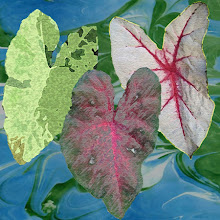
Dublin, June 14, 2010
The National Gallery, a free public institution, is just large enough a museum not to overwhelm yet intimate enough to get close up and personal with the art works. We saw a number of Dutch Masters represented by still life and genre paintings—flowers, fecund fruit and ripe cheeses on tables overborne with pewter or silver services and drapery, ready to be indulged in, or freshly killed game waiting to be dressed amidst kitchen cutlery, preparations for a meal, and portraits and scenes from everyday life — it seems the Dutch were highly specialized niche artists. Unfortunately, the Caravaggio painting, “The Death of Christ,” was on loan to Rome, a disappointment, but there was a Bruegel, “The Peasant Wedding Celebration,” and a Vermeer, “Lady Writing a Letter, with Her Maid.” What, I wondered, is the maid thinking as she glances out the leaded window, a bemused look on her face, as her mistress sits and writes her epistle? Why is the red wax seal tossed on the marble floor in front of the tapestry draped table? Was the Lady in a fit of frustration? It is such a shame to find out that Vermeer never sold this painting but kept it in his possession, yet his widow was forced to give it and another of Vermeer’s paintings to the local baker in order to afford her daily bread. The Irish painters represented in the Gallery were wonderful — Walter Frederick Osborne, Roderic O’Connor, Paul Henry, and Kitty Wilmer O’Brien, especially—and included a special wing for the paintings of Jack B. Yeats, brother of poet William Butler Yeats (whose birthday, by the way, was yesterday, June 13).
From the Gallery we walked to Merrion Square Gardens, a lovely enclosed secret garden of sorts with lushly and deeply landscaped paths, full of specimen trees and open spaces as well. Here, there is a monument to Oscar Wilde that consists of a life-sized statue of him reclining rakishly on a large rock. There are two pillared pedestals opposite him that contain Oscar Wilde one-liners such as “Thought is not catching,” or “A cynic is a man who knows the price of everything and the value of nothing,” engraved in various hand writing on the bases. A short distance from Merrion Square is St. Stephen’s Gardens, a larger, more tourist-attracting park. There, we saw a powerful Famine Memorial Sculpture and we met Mary, the self-proclaimed “ultimate living poet” who she said was sometimes compared to Emily Dickinson. She is also known as a “one woman expedition from Russia” (she originates from the Ukraine) who makes “words into meaning” and who is in a renaissance, living as poet, performance artist, and sculptor. Indeed, she was a second place contender for the design of the Dublin Millennium memorial sculpture on O’Connell Street in the heart of Dublin. Apparently, she and another contender were in dispute with the sculpture that won the commission, feeling that the steel needle that is in place wasn't up to the nuanced spirit of the charge put forth. We had quite an interesting conversation with Mary about poetry, art, and politics—a bit of Dublin color.

No comments:
Post a Comment